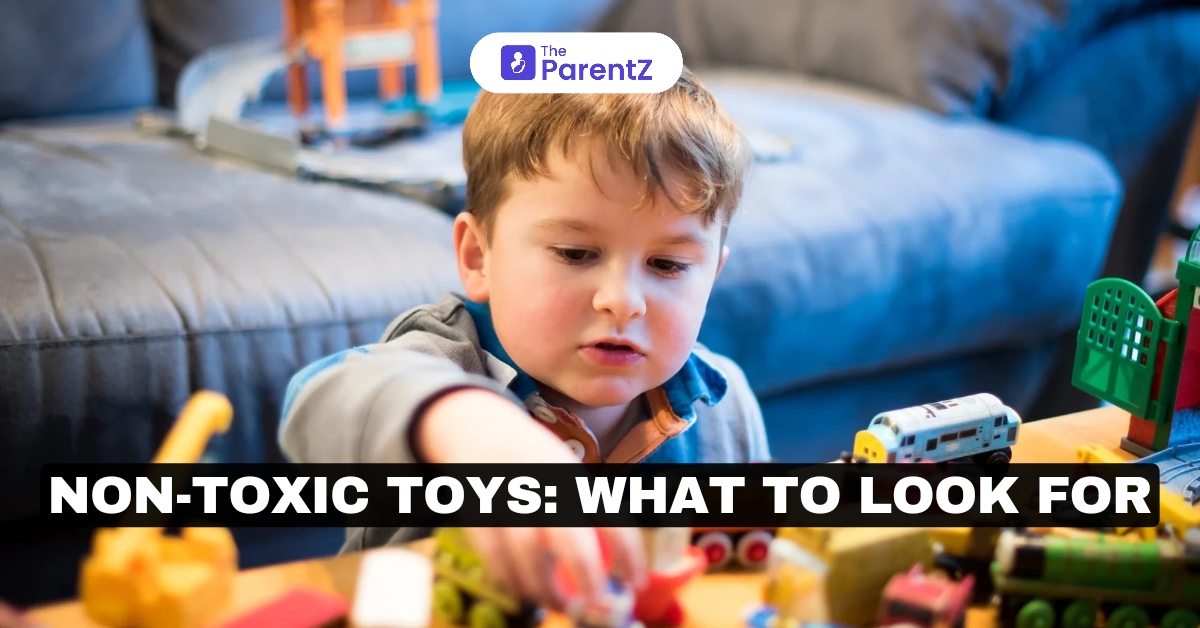When it comes to choosing toys for children, safety is a top priority for parents. However, not all toys are created equal—some may contain harmful chemicals or materials that pose risks to children’s health. Non-toxic toys are designed to minimize these risks by using safe, child-friendly materials that are free from harmful substances like lead, phthalates, and BPA. This article provides an in-depth guide to selecting non-toxic toys, helping parents make informed decisions that prioritize their children's safety and well-being.
The Risks of Toxic Toys
Toys are essential tools for learning and development, but they can also be sources of exposure to harmful chemicals. According to research published in the Journal of Environmental Health Perspectives, children are particularly vulnerable to the effects of toxic substances because their bodies are still developing, and they tend to explore the world through touch and taste.
- Lead: Lead exposure, even at low levels, can cause developmental delays, learning difficulties, and behavioral problems in children. Lead is sometimes found in the paint or plastic used in toys, especially in older or imported products.
- Phthalates: Phthalates are chemicals used to soften plastics, and they are commonly found in toys made from vinyl. These chemicals have been linked to hormonal disruptions, reproductive issues, and increased risks of asthma and allergies.
- Bisphenol A (BPA): BPA is used in the production of certain plastics and resins. Exposure to BPA has been associated with a range of health concerns, including hormonal imbalances, developmental disorders, and increased risk of certain cancers.
What to Look for in Non-Toxic Toys
When shopping for non-toxic toys, it's important to consider several factors, including the materials used, manufacturing processes, and certifications that indicate safety standards.
- Materials: Opt for toys made from natural, non-toxic materials such as:
- Non-Toxic Finishes: If a toy is painted or varnished, ensure that the finishes are non-toxic and lead-free. Water-based paints and natural oils are preferable to synthetic chemicals.
- Avoiding PVC: Avoid toys made from PVC (polyvinyl chloride), as it often contains harmful phthalates. Instead, look for toys labeled as PVC-free or made from safer plastics like polyethylene or polypropylene.
- Certifications: Look for certifications that indicate a toy has been tested for safety and is free from harmful substances. Some reliable certifications include:
Popular Non-Toxic Toy Brands
Several brands are known for their commitment to producing non-toxic, environmentally friendly toys. These companies prioritize safe materials, sustainable practices, and ethical manufacturing.
- Green Toys: Green Toys are made from 100% recycled plastic, primarily from milk jugs, and are free from BPA, phthalates, and PVC. Their products are also packaged in recyclable materials and printed with soy-based inks.
- PlanToys: PlanToys is renowned for its eco-friendly and non-toxic wooden toys. They use sustainable rubberwood and non-toxic, water-based dyes, making their products safe for children and the environment.
- Hape: Hape toys are made from sustainable materials like bamboo and FSC-certified wood. They use water-based paints and meet strict safety standards, ensuring that their toys are non-toxic and durable.
- Under the Nile: Under the Nile specializes in organic cotton toys and clothing. Their products are made from GOTS-certified organic cotton and are free from harmful chemicals, making them safe for even the youngest children.
Tips for Safe Toy Selection
In addition to choosing non-toxic materials, consider these tips to ensure the toys you buy are safe for your child:
- Age Appropriateness: Choose toys that are suitable for your child's age and developmental stage. Small parts, sharp edges, or choking hazards should be avoided for younger children.
- Check for Recalls: Stay informed about toy recalls by checking resources such as the Consumer Product Safety Commission (CPSC) website. Avoid toys that have been recalled due to safety concerns.
- Inspect Before Use: Always inspect toys for any signs of damage or wear before giving them to your child. Broken parts, peeling paint, or loose components can pose safety risks.
- Supervised Play: Supervise your child during playtime, especially with new toys. This allows you to observe how they interact with the toy and ensure it’s used safely.
Conclusion
Choosing non-toxic toys is an important step in safeguarding your child's health and well-being. By understanding the risks associated with toxic materials and selecting toys made from safe, natural, and certified materials, parents can provide their children with a safe and enriching play environment. Prioritize quality over quantity, and invest in toys that not only entertain but also support healthy development. With careful consideration and informed choices, you can ensure that your child's playtime is both fun and safe.








Be the first one to comment on this story.